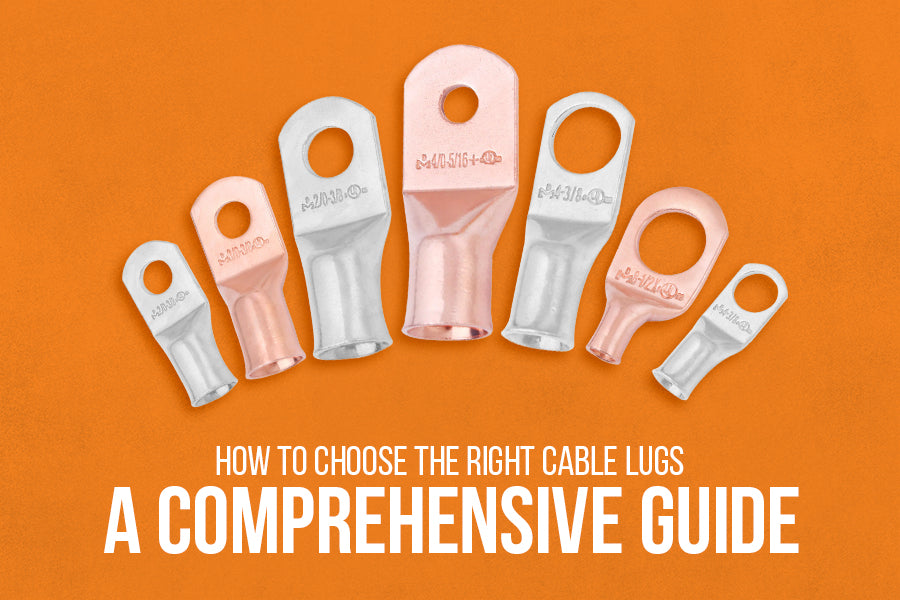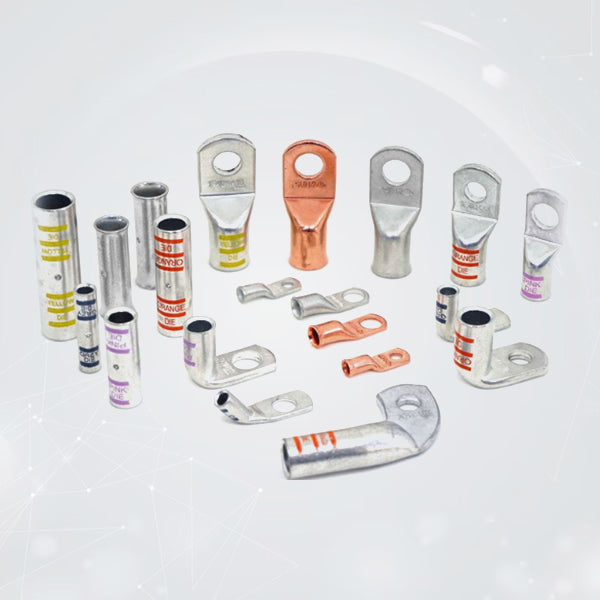
How to Choose the Right Cable Lugs: A Comprehensive Guide
Introduction
Battery cable lugs may seem like small components in an electrical or industrial system, but they play a crucial role in ensuring a secure and efficient connection between cables and equipment. Choosing the right cable lugs is essential to maintain safety, reliability, and performance in any electrical or power distribution system. In this blog post, we will explore the key factors you should consider when selecting cable lugs for your specific application.
1. Understand Your Application Requirements
Before you start choosing copper lugs, it's essential to have a clear understanding of your application's requirements. Consider factors such as:
- Voltage: Determine the voltage level of the electrical system in which the battery cable lugs will be used. Different voltage levels require different types of cable lugs. SELTERM battery cables, for example, are rated for 600V DC applications.
- Current Capacity: Calculate the maximum current the cables will carry. This will help you select copper lugs that can handle the required current without overheating. Each SELTERM battery cable end will have the maximum current rating mentioned in the product description.
- Environmental Conditions: Take into account the environmental conditions where the cable lugs will be installed. Factors like temperature, humidity, and exposure to chemicals can affect your choice. Tinned copper lugs are recommended for use in corrosive environments. Bare copper lugs are suitable for use in higher temperature conditions as tinned copper lugs could develop whiskers on the surface.
- Cable Size: Measure the size of the cables, including the diameter and conductor size, as this will determine the lug size you need. It is important to measure the conductor diameter of the cable before choosing the cable lug size. Most of the ring terminal manufacturers will provide the ID (or inner diameter) of the heavy-duty battery lugs when the cable is to be inserted. It is important to ensure that the nominal conductor diameter of the cable is 0.07” or 1.8 mm less than the ID dimension to ensure easy cable insertion.
2. Choose the Right Material
Cable lugs come in various materials, each suited to different applications. Common materials include:
- Copper: Copper lugs are excellent conductors of electricity and are widely used in electrical applications. They are suitable for both indoor and outdoor use. Most automotive applications such as battery cable terminations will require copper lugs.
- Aluminum: Aluminum lugs are lightweight and corrosion-resistant, making them ideal for outdoor installations. However, they have lower electrical conductivity than copper. Aluminum lugs are ideal in power & utility applications where there is not space constraint.
- Tin-plated: Tin-plated copper lugs offer enhanced corrosion resistance and are often used in marine or highly corrosive environments.
3. Consider Lug Type and Size
Cable lugs come in different types, including crimp lugs, solder lugs, and compression lugs. The choice of lug type depends on your specific application and installation method. Additionally, ensure that the lug size matches the cable size to achieve a secure and reliable connection.
4. Check for Compliance and Certification
It's crucial to ensure that the cable lugs you choose comply with industry standards and regulations. Look for certification marks and labels, such as UL (Underwriters Laboratories) or CSA (Canadian Standards Association), to ensure the lugs meet safety and performance standards. SELTERM battery cable ends are both UL & CUL listed so meet both UL & CSA requirements.
5. Evaluate Installation Method
Consider how you plan to install the cable lugs. Crimping, soldering, or compression methods may be used, depending on the lug type and the application. Ensure you have the necessary tools and equipment for the chosen installation method. SELTERM lugs can be crimped or soldered providing more flexibility to the installer.
6. Consult with Experts
If you are uncertain about which cable lugs to choose, don't hesitate to consult with experts or professionals in the field. They can provide valuable insights and guidance based on their experience and expertise. While considering to use a SELTERM terminal, please reach out to us with questions. Our technical team is here to help.
Conclusion
Selecting the right battery cable ends is essential for maintaining safety, reliability, and performance in your electrical or industrial system. By understanding your application requirements, choosing the appropriate material, considering lug type and size, checking for compliance, evaluating installation methods, and seeking expert advice when needed, you can make an informed decision and ensure the success of your project. Remember that the right cable lugs are a critical component of a safe and efficient electrical system.





